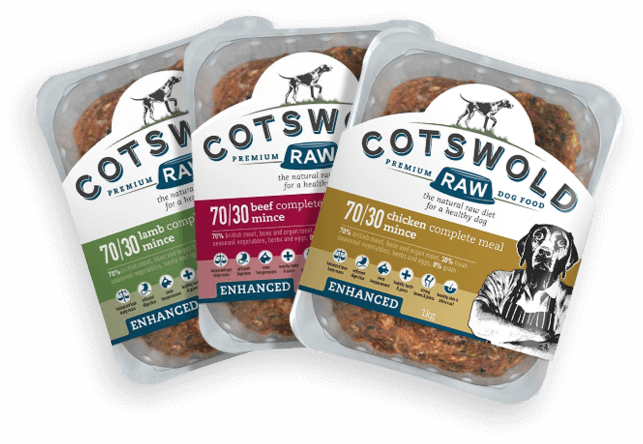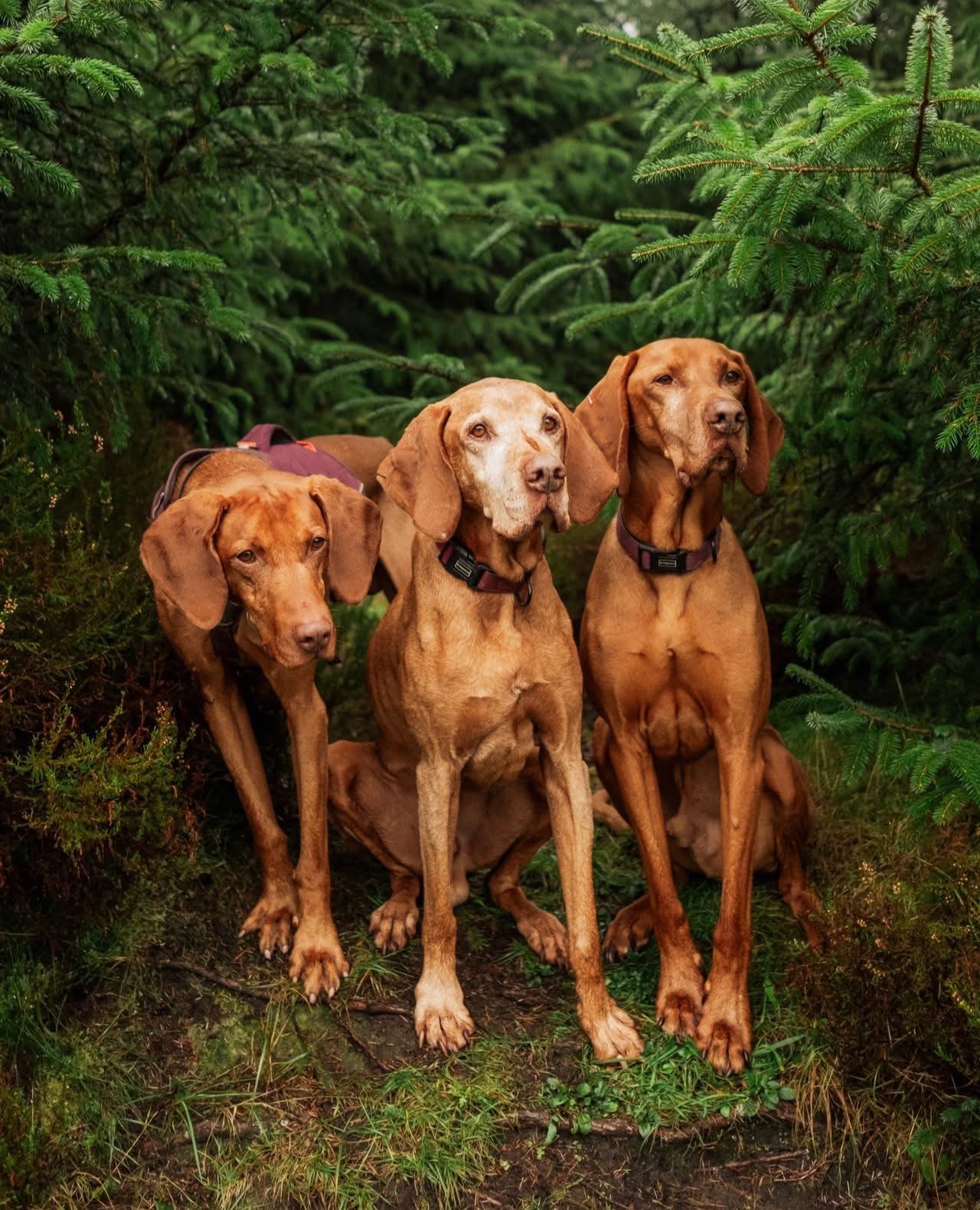Aging is an inevitable and individual process. Determining when your pet has entered their senior years is dependent on factors such as breed, genetics, and health history (1). In dogs, the senior years typically begin between 6-12 years old, whilst cats are typically classed as senior from 10 years old(2).
The aging process can largely be impacted by a pet’s diet. The correct nutrition and a bit of extra support can keep your beloved pet thriving as they live out their golden years!
This blog will discuss the changes that your pet undergoes as they age, and how their diet can support longevity.
Physiological Changes in The Senior Pet
Digestion
Efficiency of digestion and absorption of nutrients can decline with aging(1). This is thought to be due to structural changes within the intestines(3) and a reduction of gut microbiome diversity(4). Senior cats are not as good at digesting protein and fat as adult cats, therefore it’s very important that they are provided a diet which is highly digestible(5). Similarly, senior dogs also become less efficient at digesting protein(6).
Muscle Mass Loss
A loss of muscle mass and reduced function in older pets, known as sarcopenia, is a common condition. It can sometimes be difficult to notice, as some pets may be losing muscle mass but gaining fat, thus visual body condition can remain unchanged. Maintaining lean body mass is linked to a longer lifespan, making it an important aspect of senior care(2). Supporting their muscle mass through providing high quality protein is key. When they’re not receiving enough protein in their diet, it can be leached from muscles, causing loss of muscle mass(7).
Senior Dog and Cat Dietary Requirements
Proper nutrition is important at every stage of a pet’s life. However, unlike other life stages, there are no specific FEDIAF nutritional guidelines for senior dogs and cats(8). Instead, senior diets are typically formulated against adult guidelines, with some adjustments. As discussed, preventing loss of lean muscle mass is important, and we should be offering a diet which is highly palatable and highly digestible(9).
Protein
Protein is the most important macronutrient for dogs and cats, as it’s rich in essential amino acids, which contribute to healthy muscle and organ function. As protein digestibility has been shown to decrease with age, protein sources should be selected for their high bioavailability and digestibility(6). It’s a common misconception that senior pets need low protein diets. Restricting protein could be detrimental and drive loss of muscle mass(1). Senior pets should not receive a diet with restricted protein unless indicated by a certain health condition(6).
Raw protein is more digestible to dogs and cats than cooked(10). Cooking can cause proteins to denature or aggregate, which changes their structure, and makes them more difficult to digest. Additionally, raw food retains natural digestive enzymes, which would usually be killed in the cooking process. These help to further support digestion.
Energy Requirements
Senior dogs generally require less calories, with some studies reporting an 18-24% decrease in their maintenance energy requirement(11). If a dog’s energy requirements decrease, yet they continue to eat the same number of calories, they can become overweight(12). Obesity can contribute to inflammation, hence it’s important to adjust calories where necessary(1).
A cat’s energy requirements remain relatively unchanged as they age. Some research points towards a slight decrease in energy requirements between the age of 10-12, but then an increase past the age of 13, which could be a result of reduced digestive function(9).
Maintaining an optimal body condition seems to be a major factor supporting healthy ageing. A healthy dog or cat should have a visible waist when viewed from above and you should be able to easily feel their ribs and backbone with gentle pressure.
Fibre
As pets age, their digestion can slow, which can result in constipation. Offering senior dogs a little extra plant fibre goes a long way in keeping their gut moving(1). Plant fibre also acts as a prebiotic, feeding the beneficial bacteria in the gut and helping maintain a balanced microbiome(13).
As obligate carnivores, a cat’s meal should consist of mostly meat and bone. With a highly digestible meat-based diet, you should not have too many issues with constipation. Vegetables are not necessary in a cat’s diet, and they benefit very little from their nutrients. Adding a small amount of psyllium husk can be great to ease constipation. Psyllium husk is a fibre which forms a viscous gel and supports the passage of faeces in constipated cats.
Omega 3 Fatty Acids
Inclusion of omega-3 fatty acids (DHA and EPA) may support the reduction of inflammatory mediators involved with sarcopenia and chronic inflammation in seniors(14). DHA specifically, has also been associated with beneficial effects on cognitive performance in senior dogs(15).
Antioxidants
Antioxidants help neutralise free radicals in the body, which can cause cumulative damage to cells over time. To minimise the cognitive effects of aging, antioxidants are particularly important(16). Numerous studies point towards the potential benefits of antioxidants in the diet on markers of oxidative stress(12). Reduction of free radicals is an important nutritional goal, and vitamin C and E are well known antioxidants(17).
Why Raw?
Raw diets can be particularly well suited to senior pets, thanks to their higher levels of protein and fat, which are in a highly digestible format. This not only supports digestion and absorption of nutrients, but also reduces loss of lean muscle mass, supporting longevity(2).
Naturally, dogs and cats would obtain the bulk of their water from their meals. The moisture content of raw diets closely aligns with the moisture content dogs would consume through prey. This ensures that their water requirements are better met and can also help with preventing constipation.
The offal provided in a pet’s raw diet is jam-packed full of nutrients. lt contains high levels of taurine and B vitamins, as well as vitamins A, D, E and K. It also contains the essential omega-3 fatty acids, EPA and DHA. As a result, a raw diet contains valuable bioactive compounds, as well as being naturally high in antioxidants such as Vitamin C and E(17).
Is My Pet Too Old For Raw Feeding?
Considering switching to raw can be quite daunting for owners if their pet has been eating processed food all their lives, but making that switch might just be one of the best things you can do for your pet’s health. Offering a higher protein diet can support older pets as their appetite begins to decline, it ensures their protein requirements are met even if they’re consuming less.

Product Spotlight: Enhanced 70/30 Range For Dogs
Our 70/30 range for dogs is specifically formulated to provide all the nutrients needed by a senior and less active dog. Our enhanced range contains 70% meat and bone, and 30% vegetables and botanicals, with the addition of Cotswold RAW Joint Care to support and maintain flexibility and movement.
Whilst still packed with fresh protein, the meat content is slightly lower than the 80/20 range to account for reduced energy requirements. The inclusion of slightly more vegetables also helps support their digestion by keeping their gut moving. It’s perfect for supporting older dogs.
Alternatively, if you wish to keep your dogs on the 80/20 range a little longer, you can purchase the Cotswold Joint Care separately and add a sprinkle to each meal to give their joints some extra support. Just remember, if feeding a senior dog the 80/20 adult range, reduce their feeding amount accordingly.

References
- Freeman, L. M. (2013) ‘Optimal Nutrition for Senior Pets,’ World Small Animal Veterinary Association World Congress Proceedings. Available at: https://www.vin.com/apputil/content/defaultadv1.aspx?id=5709920&pid=11372
- Bermingham, E. N. et al. (2024) ‘Nutritional needs and health outcomes of aging cats and dogs: is it time for updated nutrient guidelines,’ Animal Frontiers, 14(3), 5-16. Available at: https://academic.oup.com/af/article/14/3/5/7696638
- Peachey, S. E. et al. (2000) ‘Gastrointestinal transit times in young and old cats,’ Comparative Biochemistry and Physiology Part A: Molecular and Integrative Physiology, 126(1), 85-90. Available at: https://www.sciencedirect.com/science/article/abs/pii/S1095643300001896?via%3Dihub
- Masuoka, H. et al. (2017) ‘Transition of the intestinal microbiota of dogs with age,’ Bioscience of Microbiota, Food and Health, 36(1), 27-31. Available: https://pubmed.ncbi.nlm.nih.gov/28243548/
- Bermingham, E. N. et al. (2013) ‘Seasonal and age effects on energy requirements in domestic short-hair cats (Felis catus) in a temperate environment,’ Journal of Animal Physiology and Animal Nutrition, 97(3), 522-530. Available at: https://pubmed.ncbi.nlm.nih.gov/22530814/
- Holt, S. L. (2021) ‘The nutritional assessment,’ Veterinary Nursing Journal, 36(12), 346-349. Available at: https://www.tandfonline.com/doi/full/10.1080/17415349.2021.1951635
- Groves, E. (2019) ‘Nutrition requirements of senior pets,’ InFocus Improve Veterinary Practice. Available at: https://www.veterinary-practice.com/article/nutrition-requirements-of-senior-pets
- FEDIAF Scientific Advisory Board Statement (2017) Nutrition of senior dogs. Available from:https://europeanpetfood.org/wpcontent/uploads/2022/03/FEDIAF_SAB_Statement_Nutrition_of_Senior_Dogs_fin.pdf (29/07/25)
- Laflamme, D. and Gunn-Moore, D. (2014) ‘Nutrition of aging cats,’ Veterinary Clinics of North America: Small Animal Practice, 44(4), 761-774. Available at: https://pubmed.ncbi.nlm.nih.gov/24951345/
- Algya, K. M. et al. (2018) ‘Apparent Total Macronutrient Digestibility, Serum Chemistry, Urinalysis, and Faecal Characteristics, Metabolites and Microbiota of Adult Dogs Fed Extruded, Mildly Cooked, and Raw Diets,’ Journal of Animal Science, 96(9), 3670-3683. Available at: https://doi.org/10.1093/jas/sky235
- Harper, E. J. (1998) ‘Changing perspectives on aging and energy requirements: aging, body weight and body composition in humans, dogs and cats,’ The Journal of Nutrition, 128(12), 2627-2631. Available at: https://pubmed.ncbi.nlm.nih.gov/9868223/
- Laflamme, D. P. (2005) ‘Nutrition for aging cats and dogs, and the importance of body condition,’ Veterinary Clinics of North America: Small Animal Practice, 35(3), 713-742. Available at: https://pubmed.ncbi.nlm.nih.gov/15833567/
- Le Bon, M. et al. (2023) ‘A Novel Prebiotic Fibre Blend Supports the Gastrointestinal Health of Senior Dogs,’ Animals, 13(20), 3291. Available at: https://www.mdpi.com/2076-2615/13/20/3291
- Groves, E. (2019). Nutrition in senior cats and dogs: How does the diet need to change, when and why? Companion Animal, 24(2), 91–101. https://doi.org/https://doi.org/10.12968/coan.2019.24.2.91
- Hadley, K. B. et al. (2017) ‘The oil-rich alga Schizochytrium sp. as a dietary source of docosahexaenoic acid improves shape discrimination learning associated with visual processing in a canine model of senescence,’ Prostaglandins, leukotrienes and essential fatty acids, 118, 10-18. Available at: https://pubmed.ncbi.nlm.nih.gov/28288702/
- Ikeda-Douglas, C. J. et al. (2004) ‘Prior experience, antioxidants, and mitochondrial cofactors improve cognitive function in aged beagles,’ Veterinary Therapeutics: Research in Applied Veterinary Medicine, 5(1), 5-16. Available at: https://pubmed.ncbi.nlm.nih.gov/15150725/
- Stogdale, L. (2019) ‘One veterinarian’s experience with owners who are feeding raw meat to their pets,’ The Canadian Veterinary Journal, 60(6), 655-658. Available at: https://pmc.ncbi.nlm.nih.gov/articles/PMC6515799/#b7-cvj_06_65
Lucy James, BSc (Hons) Bioveterinary Science
Looking to enhance your pet’s diet? Take a look at Cotswold RAW’s range of raw dog food and cat food, including raw meaty bones, dried treats, and puppy food.

